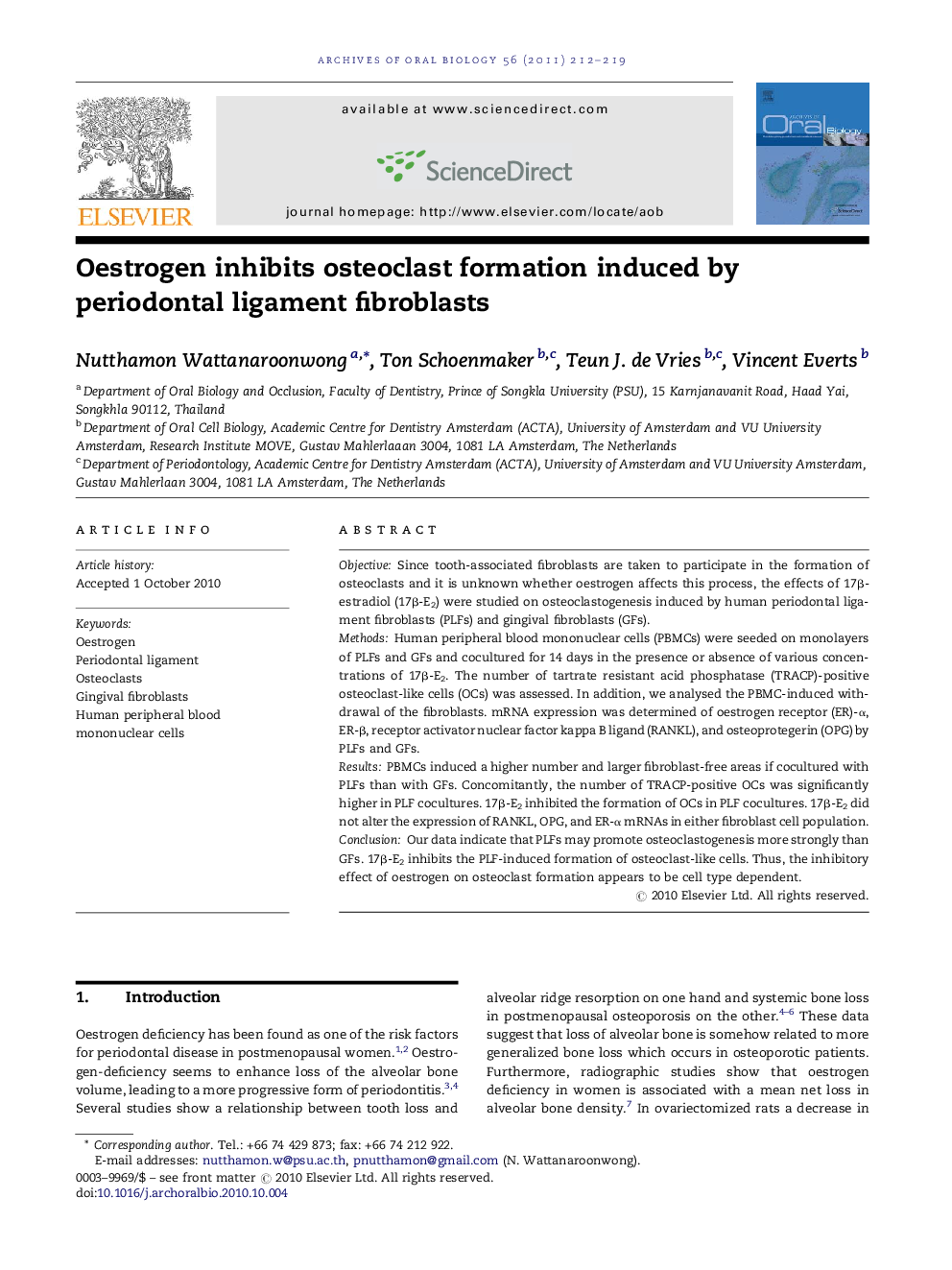| Article ID | Journal | Published Year | Pages | File Type |
|---|---|---|---|---|
| 3121007 | Archives of Oral Biology | 2011 | 8 Pages |
ObjectiveSince tooth-associated fibroblasts are taken to participate in the formation of osteoclasts and it is unknown whether oestrogen affects this process, the effects of 17β-estradiol (17β-E2) were studied on osteoclastogenesis induced by human periodontal ligament fibroblasts (PLFs) and gingival fibroblasts (GFs).MethodsHuman peripheral blood mononuclear cells (PBMCs) were seeded on monolayers of PLFs and GFs and cocultured for 14 days in the presence or absence of various concentrations of 17β-E2. The number of tartrate resistant acid phosphatase (TRACP)-positive osteoclast-like cells (OCs) was assessed. In addition, we analysed the PBMC-induced withdrawal of the fibroblasts. mRNA expression was determined of oestrogen receptor (ER)-α, ER-β, receptor activator nuclear factor kappa B ligand (RANKL), and osteoprotegerin (OPG) by PLFs and GFs.ResultsPBMCs induced a higher number and larger fibroblast-free areas if cocultured with PLFs than with GFs. Concomitantly, the number of TRACP-positive OCs was significantly higher in PLF cocultures. 17β-E2 inhibited the formation of OCs in PLF cocultures. 17β-E2 did not alter the expression of RANKL, OPG, and ER-α mRNAs in either fibroblast cell population.ConclusionOur data indicate that PLFs may promote osteoclastogenesis more strongly than GFs. 17β-E2 inhibits the PLF-induced formation of osteoclast-like cells. Thus, the inhibitory effect of oestrogen on osteoclast formation appears to be cell type dependent.
